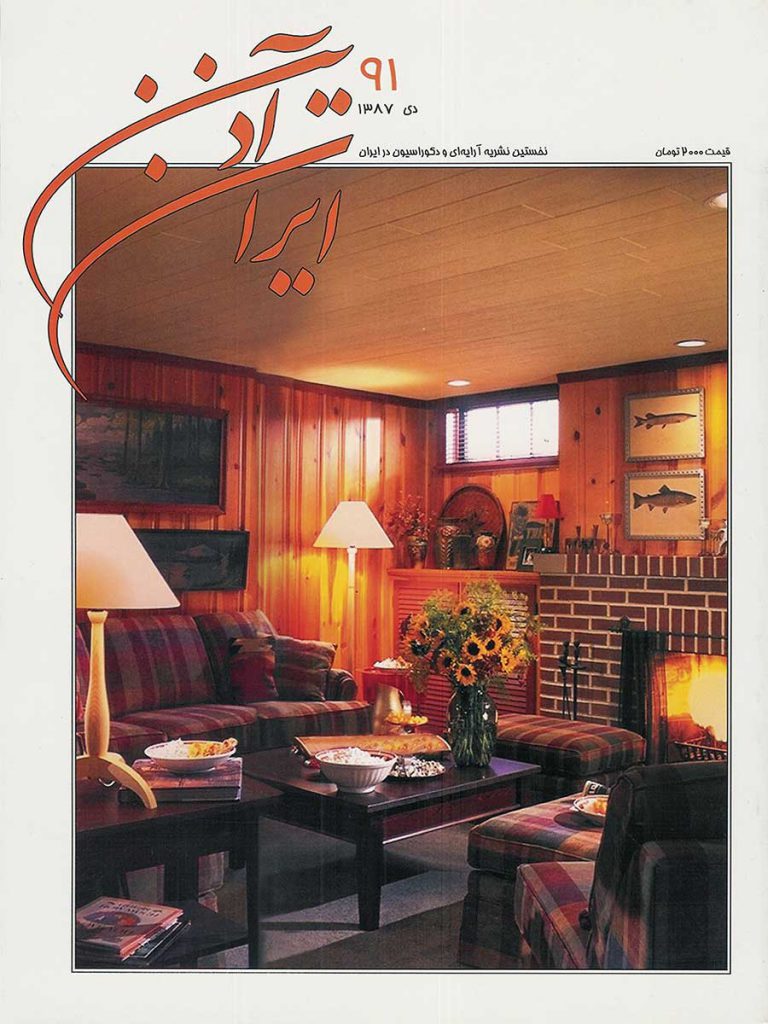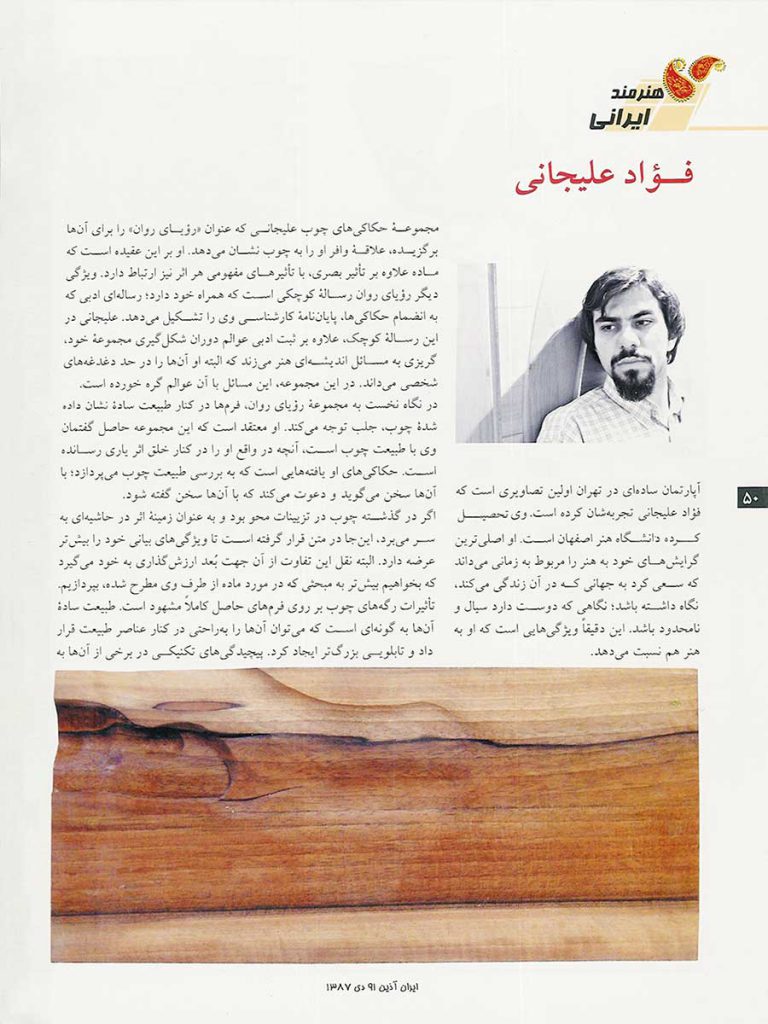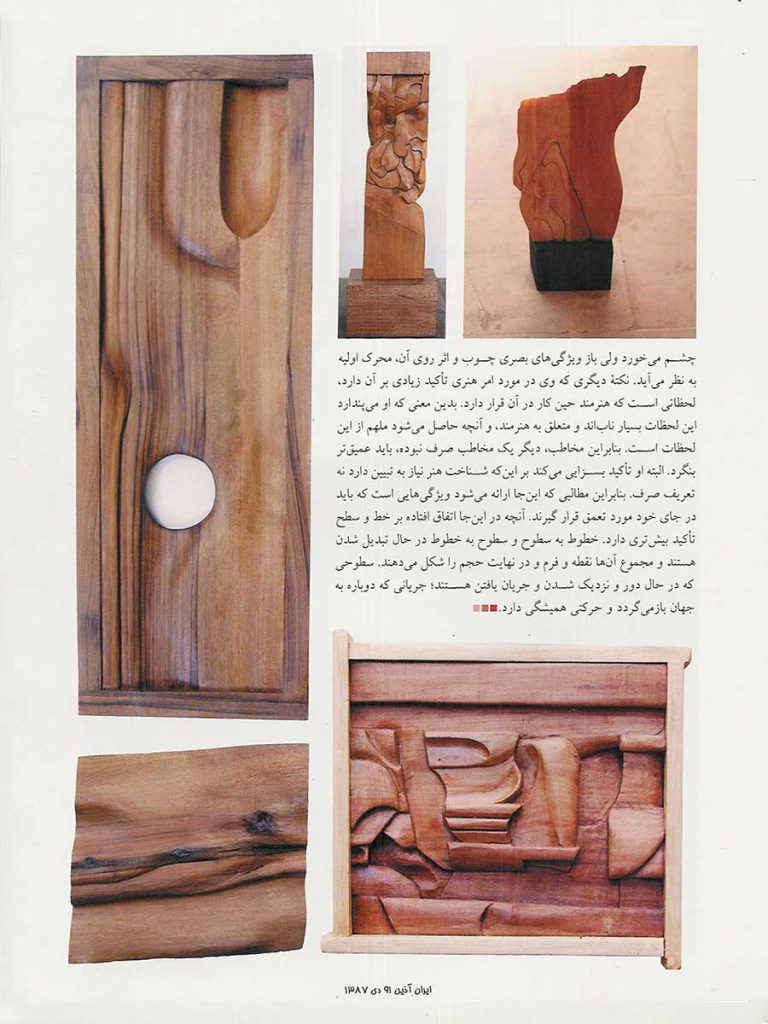Review: “About Artist”
Iran Azin Magazine, no. 91 (December 2008).



A modest apartment in Tehran was the first image experienced by Foad Alijani. He attributes his main inclinations toward art to the time when he tried to have a vision onto the world he lives in. A vision that he wishes to be fluid and boundless. These are precisely the qualities he attributes to art as well. Alijani’s collection of wood engravings, titled Fluid Dream, reveals his profound passion for wood. He believes that the material, beyond its visual impact, is also connected to the conceptual effects of the work. Another part of the Fluid Dream project is the small treatise it includes. This literary treatise, alongside the engravings, forms his bachelor’s thesis project. In this small treatise, Alijani not only literally records the realms of the period during which his collection took shape but also touches on philosophical issues of art, which he considers personal concerns. In this project, these issues are intertwined with those realms. At first glance, the forms in the Fluid Dream collection, alongside the simple nature of the displayed wood, capture attention. He believes that this collection is the result of his dialogue with the nature of wood, which has, in fact, aided him in creating the work. His engravings are discoveries that explore the nature of wood. He speaks with them and invites others to speak with them as well. If in the past wood was obscured in decorations and relegated to the margins as a backdrop for the work, here it is placed at the forefront to more fully express its distinctive qualities. Of course, this distinction gains a valuative dimension when we delve deeper into the topic of material raised by him. The effects of the wood’s grain on the resulting forms are clearly evident. Their simple nature is such that they can easily be placed alongside elements of nature, creating a larger frame. Technical complexities are noticeable in some of them, yet the visual qualities of the wood and its effect remain the primary driving force. Another point he strongly emphasizes regarding the artistic process is the moments in which the artist is immersed while working. This means he believes these moments are profoundly pure and belong to the artist. What results is inspired by these moments. Thus, the audience is no longer merely a passive observer but must look more attentively. Of course, he strongly emphasizes that understanding art requires explication, not mere definition. Therefore, the matters presented in these works are characteristics that must be contemplated in their own context. What has occurred in these works places greater emphasis on line and surface. Lines transform into surfaces, and surfaces into lines, collectively forming point, form, and ultimately volume. Surfaces that are moving closer and farther, in constant flow. A flow that returns to the world and maintains perpetual motion.